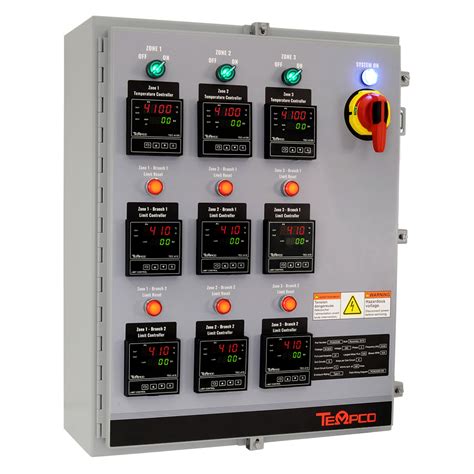electrical enclosure thermal management Sloped top enclosures are ideal for housing electrical and electronic components for applications in harsh and dirty environments where dust, dirt, oil, water and other contaminants are present and applications requiring washdowns. The most common electrical box screw size is 6-32 machine screw. However, for many applications, 6-32 is too light duty, so we use an 8-32 or even a 10-32 instead. The thread pitch, however, is always 32.
0 · thermal control enclosure dimensions
1 · industrial electrical enclosures
2 · industrial electrical enclosure specifications
3 · industrial appication electrical enclosure
4 · enclosure thermal systems sizing
5 · enclosure thermal control systems
6 · electrical enclosure design
7 · control enclosure heating requirements
Most problems in sheet metal forming come from a bad control of holding, restraining and springback. Holding controls the shape of the blank and the contact between the blank and the .
Learn how to improve enclosure design in this guide covering 14 considerations on thermal management best practices, from cooling options and selection through to design considerations. Examples are presented using CFD .Radiation is the transfer of thermal energy via conversion to and from electrical energy, such as with an electric strip heater. This white paper discusses the diferent types of enclosure thermal management systems used to maintain optimum conditions inside enclosures.
Learn how to improve enclosure design in this guide covering 14 considerations on thermal management best practices, from cooling options and selection through to design considerations. Examples are presented using CFD simulation results to illustrate the need to understand airflow and heat transfer within electronics enclosures.Sloped top enclosures are ideal for housing electrical and electronic components for applications in harsh and dirty environments where dust, dirt, oil, water and other contaminants are present and applications requiring washdowns. Housing electrical components inside an enclosure in industrial applications protects them from the environment. Learn how to select and size the right one Is there an ideal system for keeping an electrical enclosure cool? Today we distinguish the main systems, describing for each the characteristics in order to choose the most suitable one in different situations.
On-line thermal optimization The ProClima Thermal calculation software is for calculating and selecting the thermal accessories required for enclosures containing electrical and electronic equipment. View Details
Enclosure design is an important aspect of system level thermal management to ensure electronics performance and reliability. Learn how to improve enclosure design in this guide covering 14 considerations on thermal management best practice. Proactive Plan + High-Performance Products: An Ideal Thermal Management Solution. In fast-paced manufacturing environments, crafting a proactive thermal management plan for electrical enclosures keeps operations running smoothly and avoids costly downtime.
Controlling the temperature can eliminate the risk of condensation forming inside the enclosure, and eliminate overheating or freezing of the electrical devices. Different types of thermal management systems are used to control the temperature and other conditions inside control enclosures.
Design engineers must incorporate thermal management equipment, such as air conditioners and heaters, into electrical and electronic enclosures to protect against temperature and moisture conditions that can lead to device failures.
Radiation is the transfer of thermal energy via conversion to and from electrical energy, such as with an electric strip heater. This white paper discusses the diferent types of enclosure thermal management systems used to maintain optimum conditions inside enclosures.Learn how to improve enclosure design in this guide covering 14 considerations on thermal management best practices, from cooling options and selection through to design considerations. Examples are presented using CFD simulation results to illustrate the need to understand airflow and heat transfer within electronics enclosures.
Sloped top enclosures are ideal for housing electrical and electronic components for applications in harsh and dirty environments where dust, dirt, oil, water and other contaminants are present and applications requiring washdowns. Housing electrical components inside an enclosure in industrial applications protects them from the environment. Learn how to select and size the right one
Is there an ideal system for keeping an electrical enclosure cool? Today we distinguish the main systems, describing for each the characteristics in order to choose the most suitable one in different situations.On-line thermal optimization The ProClima Thermal calculation software is for calculating and selecting the thermal accessories required for enclosures containing electrical and electronic equipment. View Details
Enclosure design is an important aspect of system level thermal management to ensure electronics performance and reliability. Learn how to improve enclosure design in this guide covering 14 considerations on thermal management best practice. Proactive Plan + High-Performance Products: An Ideal Thermal Management Solution. In fast-paced manufacturing environments, crafting a proactive thermal management plan for electrical enclosures keeps operations running smoothly and avoids costly downtime. Controlling the temperature can eliminate the risk of condensation forming inside the enclosure, and eliminate overheating or freezing of the electrical devices. Different types of thermal management systems are used to control the temperature and other conditions inside control enclosures.

thermal control enclosure dimensions
industrial electrical enclosures
Brackets are intermediate components that attach one object to another (e.g., a shelf to a wall), align parts within an enclosure, or fortify a part by supplying extra structural support. Depending on its type, a bracket is either mounted with hardware or welded inside a sheet metal part.
electrical enclosure thermal management|enclosure thermal systems sizing